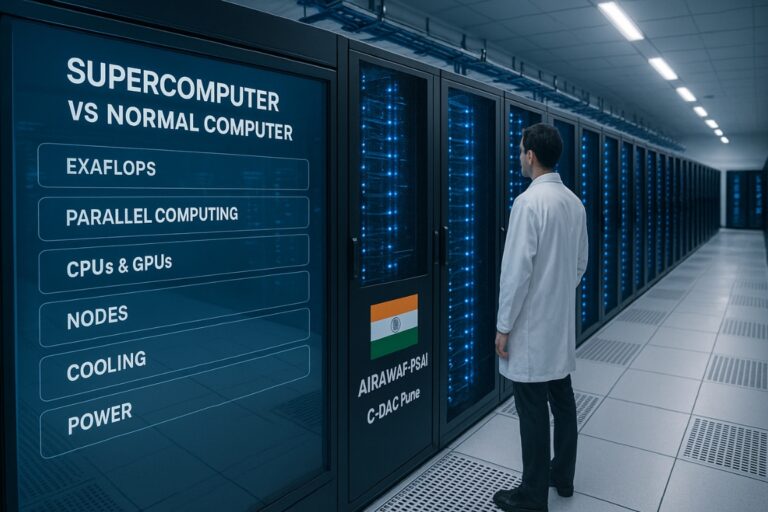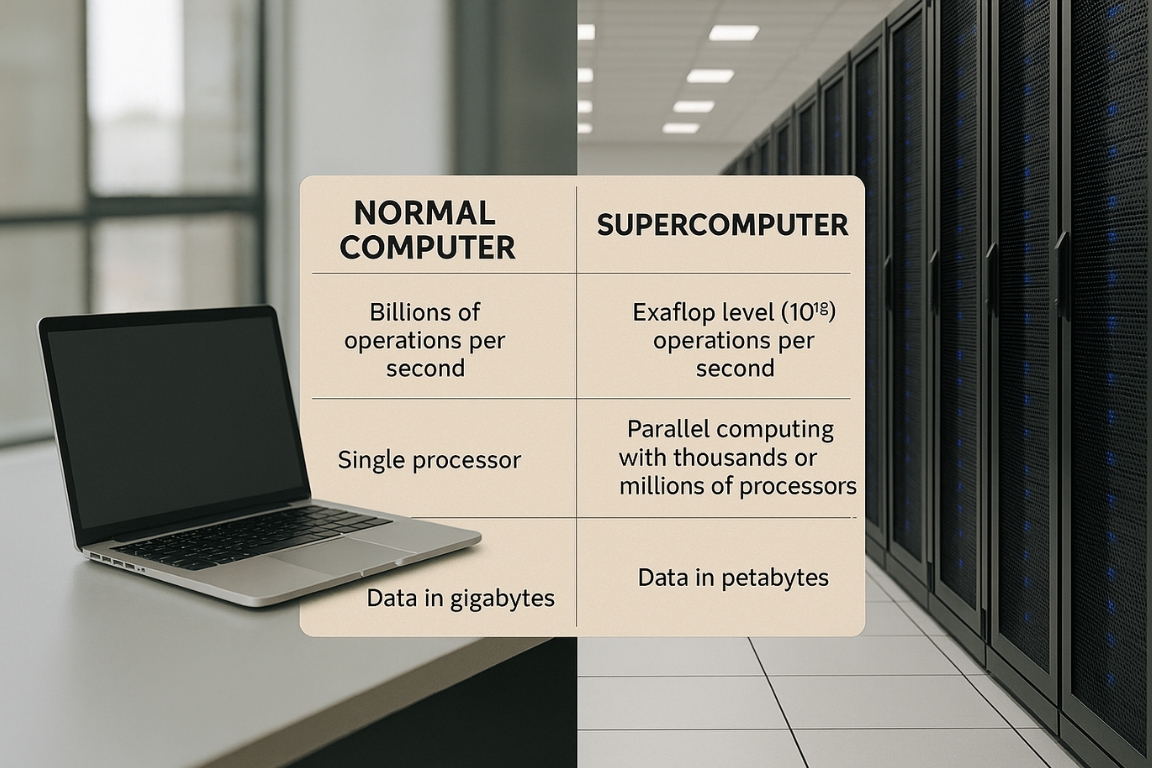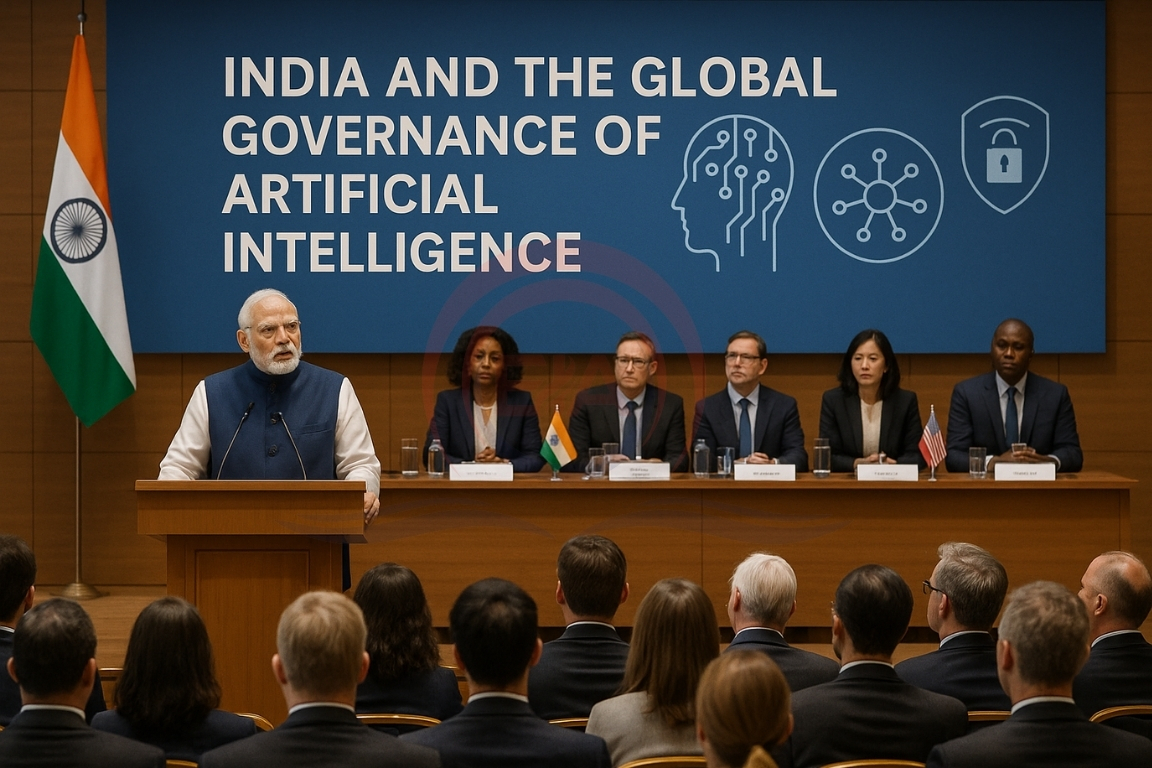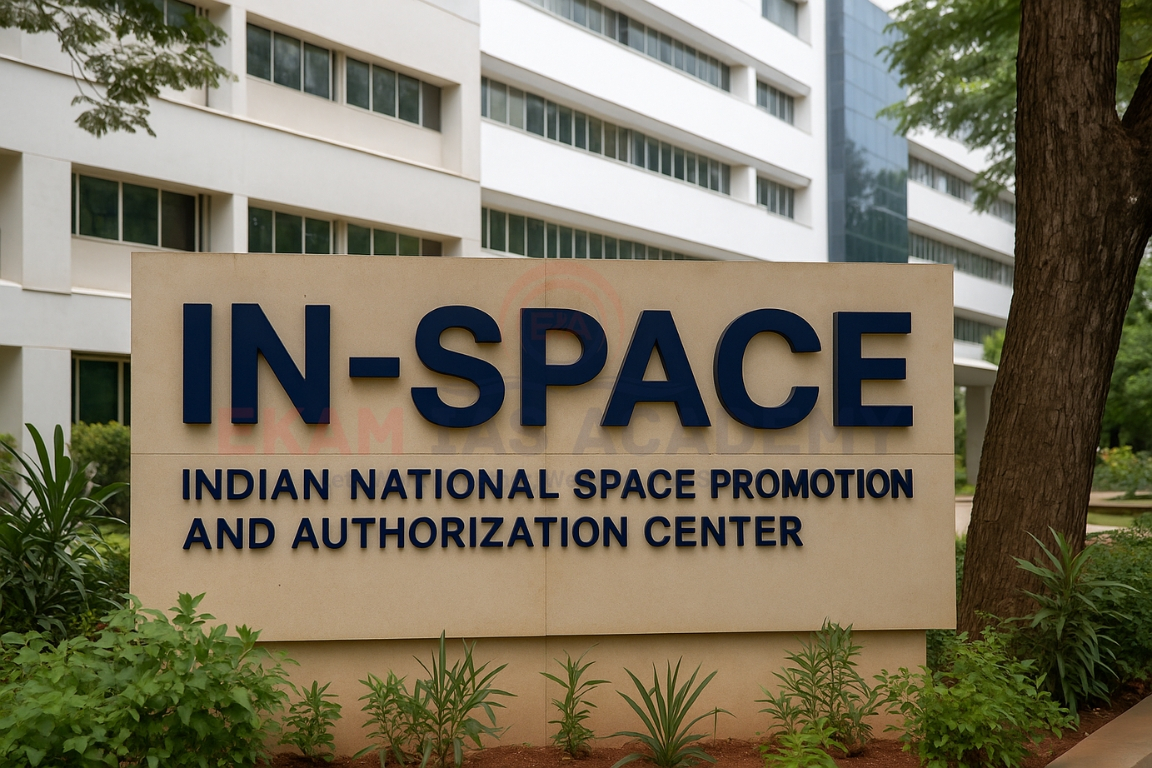Recently, India’s fastest AI supercomputer AIRAWAT-PSAI at C-DAC, Pune, entered the Top 100 global rankings, highlighting India’s growing capacity in high-performance computing.
What are Supercomputers?
- Supercomputers are extremely powerful machines that handle problems too large and complex for normal computers.
- Tasks like weather forecasting, nuclear simulations, drug discovery, and space modelling rely on them.
- Unlike a personal laptop that performs billions of operations per second, supercomputers work at the exaflop level (10¹⁸ operations per second).

How Do They Work?
- Parallel Computing: Instead of a single processor working fast, thousands/millions of processors share the task.
- Processors (CPUs & GPUs): CPUs handle general tasks, while GPUs manage repetitive calculations needed for simulations.
- Nodes: A cluster of processors with memory; thousands of such nodes form the machine.
- Networking & Storage: High-speed networks connect nodes; massive storage (in petabytes) manages scientific data.
- Cooling & Power: Generate huge heat; special cooling systems and electricity supply equal to a small town are needed.
India’s Supercomputing Journey
- 1980s: Denial of imports pushed India to develop indigenous systems.
- 1991: Launch of PARAM 8000, India’s first homegrown supercomputer.
- 2015: National Supercomputing Mission (NSM) to set up 70+ facilities and build domestic hardware/software.
- Major Systems:
- AIRAWAT-PSAI (Pune) – India’s fastest AI supercomputer.
- Pratyush (Pune) & Mihir (Noida) – weather and climate prediction.
- PARAM series – installed across IITs, IISERs, and labs.
Future Outlook
- Exascale Computing: Already in use globally; India working towards it.
- Quantum Computing: May transform problem-solving with less hardware.
- Neuromorphic Designs: Inspired by the human brain, offering better efficiency.
Conclusion
Supercomputers are not “giant laptops” but national assets supporting science, defence, and technology. India’s progress under NSM marks a step towards technological self-reliance and future-ready computing.





